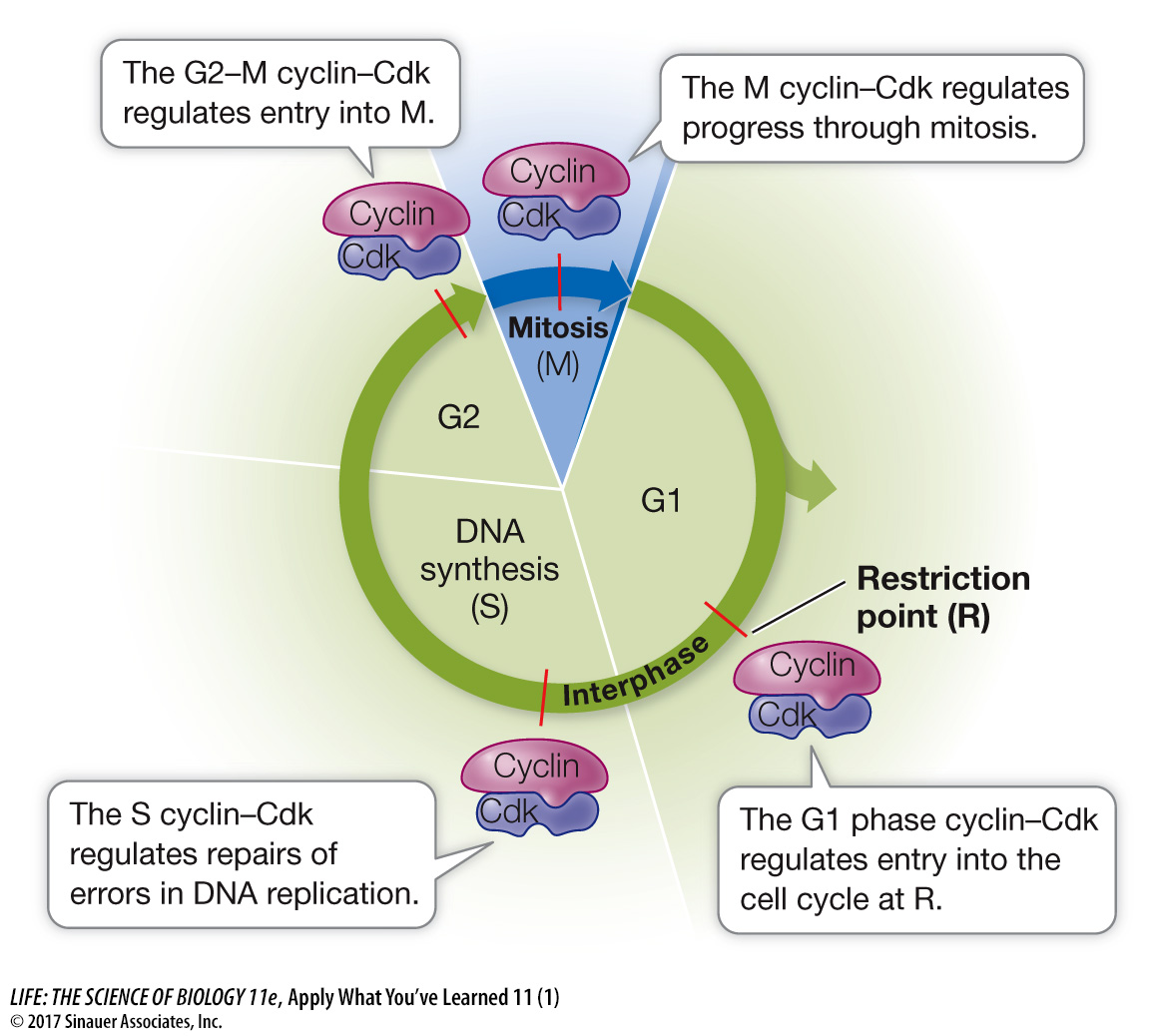Apply What You’ve Learned
Review
11.7
Cell cycle abnormalities play an important role in the development of cancer.
11.7 Cancer therapies are targeted to events in the cell cycle.
The healing properties of plants have been known for thousands of years. When laboratory techniques became sophisticated enough to begin isolating such compounds from living things, scientists turned to plants as potential sources of anticancer drugs. Since then, countless candidates—
Researchers use water or other solvents to make extracts from plants. They test the extracts first on cancer cells and then on animal models. Those extracts that have anticancer activities are studied to see how they work.
One way in which cells become cancerous is that they lose control of the cell cycle. There are four checkpoints involved in this control, each with cyclin and cyclin-

The table below summarizes results from tests in which plant extracts were tested for their ability to inhibit cyclin–
| Plant extract | Cyclin D– |
Cyclin E– |
Cyclin A– |
Cyclin B– |
|---|---|---|---|---|
| 1 | +++ | +++ | 0 | +++ |
| 2 | +++ | +++ | +++ | 0 |
| 3 | 0 | +++ | +++ | +++ |
| 4 | +++ | 0 | +++ | +++ |
Questions
1.
Scientists can coax a group of cells to grow in synchrony so that all cells pass through the same cell cycle phases at the same time. What would you expect to observe if, in separate experiments, you added each of the four plant extracts to cancer cells in early G1?
Cells would halt at various points in the cell cycle:
Extract 1: cells would accumulate in G2.
Extract 2: cell would accumulate in M.
Extract 3: cells would accumulate in G1.
Extract 4: cells would accumulate in S.
2.
Tumors have billions of cells. Very few tumors respond to a single drug that affects the cell cycle. Combination chemotherapy, targeting several checkpoints, is often used. Can you suggest a reason for this? (Hint: Not all cancer cells are the same.)
Different cells in a tumor may have different errors in cell cycle control. One cell may respond to a G1 inhibitor and another cell to an S phase inhibitor.
3.
What would a researcher have to do to develop drugs from the plant extracts that could be administered to human cancer patients for halting tumor growth?
The researcher could isolate compounds from each cell extract and test them individually in the same tests carried out with the extract in order to locate the specific molecule that acts as an inhibitor in each case. These molecules can be analyzed to determine their chemical structures in order to synthesize them and carry out additional tests, including animal tests, to ensure that they are safe.
4.
In some cancer cells, hyperactivation of cyclin–
| Ratio of protein expressed in cancer cells versus noncancer cells | |
|---|---|
| Cyclin A | 0.98 |
| Cyclin B | 0.99 |
| Cyclin D | 1.02 |
| Cyclin E | 1.01 |
| Cdk1 | 4.25 |
| Cdk2 | 0.95 |
| Cdk4 | 0.98 |
| Cdk6 | 1.04 |
Only one protein is overexpressed in cancer cells compared with non-
5.
Each Cdk shown above is regulated by another group of proteins. For each Cdk, there is a kinase that inhibits Cdk from binding to cyclin and a phosphatase that activates Cdk binding to cyclin. The diagram below shows kinase inactivation using a plus symbol and phosphatase activation using a minus symbol. Suppose researchers found a plant extract that halted kinase activity and another that halted phosphatase activity. Would the researchers be interested in one or both extracts as potential sources of an anticancer drug? Explain.
Researchers would be interested in the plant extract that halted phosphatase activity but not the extract that halted kinase activity. Phosphatase activates Cdk, which leads to progression through the checkpoint. The goal of an anticancer drug is to stop progression through the checkpoint so cell division stops. Therefore it would be desirable to inhibit the phosphatase that activates Cdk. It would not be desirable to inhibit the kinase, which is already doing what is necessary to inhibit Cdk.
